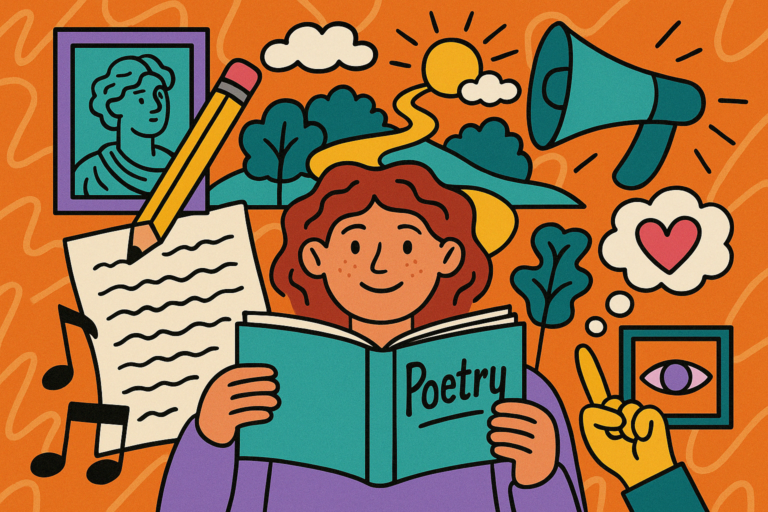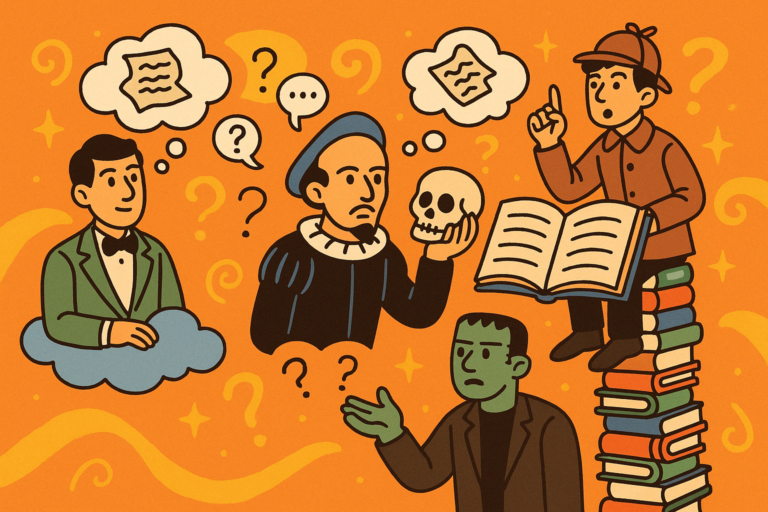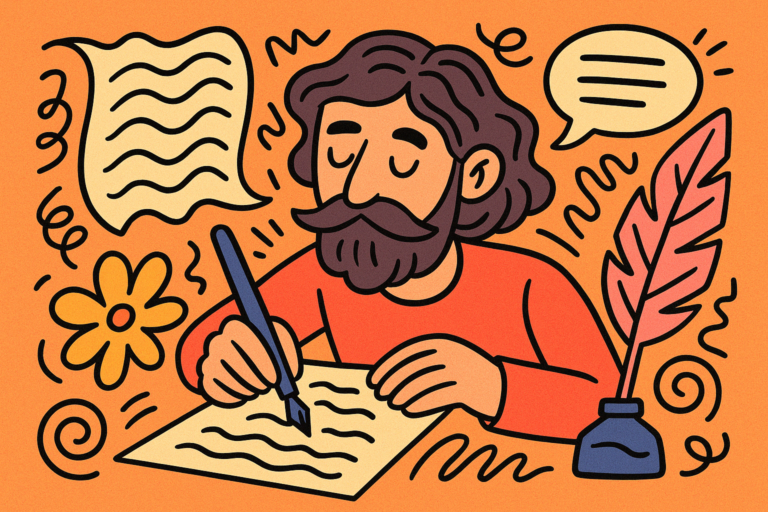How Spoken-Word Poetry And Slam Poets Are Modern-Day Bards

Okay, hear me out—slam poets are basically the bards of today.
I know that sounds like a stretch at first, but the more I dug into it, the more it started to make sense.
Just like bards of old wandered from village to village telling stories, stirring emotions, and speaking truth to power, modern spoken-word poets are doing the same—except they’ve swapped harps for handheld mics and taverns for packed open mics.
They’re carrying oral traditions forward, channeling community experiences, and challenging norms in public spaces—exactly what bards did centuries ago.
And it’s not just a surface-level vibe; there’s real structure, intent, and power behind it.
This post dives into that connection—how spoken-word poetry isn’t just a trendy art form but a living continuation of a deep, ancient storytelling lineage.
Let’s start by looking at how the oral tradition got a fresh pair of sneakers in the spoken-word world.
Spoken Word Is Just Oral Tradition with a Mic
Let’s be honest—we’re kind of obsessed with written text. But long before books or PDFs or even ink on parchment, storytelling was a spoken art. That’s what bards did. They passed down history, morals, gossip, and entire mythologies through voice alone.
And guess what?
Spoken-word poets are doing the same thing—just with more rhythm and a lot more attitude.
What struck me in my research is that spoken word isn’t a new wave—it’s a continuation of something very old.
Like, pre-Gutenberg old.
Think about the griots of West Africa—those poetic historians who memorized generations of genealogy and passed it down through performance. Or the Filipino balagtasan, a poetic debate art form that’s still practiced. These weren’t just entertainers.
They were the keepers of cultural memory.
In many ways, today’s slam poets are inheriting that same job—especially those working from marginalized identities, who use performance as a tool of both resistance and remembrance.
Now, I’m not saying every open mic night is a sacred ceremony, but the bones are there. The performance element, the oral delivery, the communal setting—all of it echoes bardic tradition.
What’s different today is the urgency of the content. Modern poets aren’t just retelling myths—they’re documenting lived experiences. Police brutality. Immigration.
Gender identity.
Gentrification.
It’s real, raw, and often right off the front page.
One example that blew me away?
Clint Smith’s poem “Counterfactual”—it’s short, powerful, and delivered with such emotional precision that you can feel history folding into the present.
Or Safia Elhillo, who blends Sudanese Arabic with English to explore displacement and diaspora in a way that’s deeply lyrical but hits hard because it’s spoken out loud.
That blend of the personal and political?
Classic bard move.
Another thing: tone and rhythm. Bards used music or meter to make stories memorable.
Slam poets?
They might not have a lute, but the cadence, the breath control, the rise and fall of emotion—it’s all part of making the poem stick. Try watching Danez Smith perform and tell me it doesn’t feel like witnessing a spell being cast.
So yeah—spoken-word poetry isn’t just modern art. It’s oral tradition in new clothes. And honestly, once you see that, it changes how you hear it. It’s not just performance—it’s preservation.
What Makes a Slam Poet a Modern Bard
Let’s break it down—what actually makes a slam poet a “modern-day bard”?
I pulled together these seven core traits based on patterns I kept seeing over and over. Think of this as a kind of poetic blueprint that ties ancient tradition to contemporary performance.
1. Oral Storyteller
This one’s foundational.
Slam poets live in the breath, in the voice. They control rhythm, tone, pacing—everything a bard once did with meter or melody.
Think of someone like Sarah Kay—her control over timing turns her poetry into a performance that sticks in your head like a great melody.
2. Cultural Critic
Bards weren’t neutral—they often challenged kings and questioned the status quo. Slam poets do that daily.
Whether it’s Marc Bamuthi Joseph dissecting systemic racism or Franny Choi unpacking queer futurism, they’re throwing punches, not just painting pretty pictures.
3. Community Voice
This one hits deep. Spoken-word artists often speak for, or with, their communities. They channel collective experiences—pain, pride, protest—into personal narratives.
Like how Terisa Siagatonu brings the Pacific Islander experience into conversations about climate justice. It’s intimate and global.
4. Improviser & Performer
Unlike page poets, slam poets have to own the stage. There’s a theatrical element that’s pure bard.
They’re part actor, part preacher, part rhythm section. Watch Ed Mabrey in a live slam and you’ll see what I mean—it’s not just recitation; it’s performance art.
5. Historian
I know this might seem like a stretch, but hear me out.
Poets like Mahogany L. Browne and Joshua Bennett are documenting life as it unfolds—preserving the emotions and tensions of right now in verse. It’s a living archive, stored not in scrolls, but in recordings, memory, and muscle.
6. Rhythm-Driven
Slam is driven by beats—even when there’s no music. It’s a kind of embodied meter. That same sense of rhythm once came from the lyre or drum. Slam poets have internalized it. You can feel the pulse even in silence.
7. Sacred Provocateur
Here’s the wildcard—slam poets disrupt.
They stir discomfort, provoke thought, and push listeners into the space between resistance and revelation.
Just like ancient bards, they speak the unspeakable. They say the thing the room is trying to avoid. And somehow, we thank them for it.
How the Stage Became the New Fire Pit
If you’ve ever been to a good slam, you know it’s not just a show—it feels like something bigger. There’s an energy, a ritual, that kicks in the moment someone says, “Can I get a mic check?”
That opening—the invocation—sets the tone. Just like ancient bards might begin with a call to the Muses or a blessing before the tale, slam poets use that mic check to ground the space. It signals: this is more than entertainment. This is communal. There’s a pulse to it.
And then there’s the audience. In slam, the crowd isn’t just watching—they’re responding. Snaps, “mmm-hmms,” head nods, laughter, sudden gasps. It’s not passive consumption; it’s co-creation. The audience affirms the poet’s rhythm and message in real time.
That dynamic?
It’s ancient.
The bard needed the crowd. The crowd shaped the bard.
Even the competitive aspect of slam carries ritual weight. Scoring isn’t just about numbers—it’s a dramatic tension that forces clarity, urgency, and intention. That tension turns the room electric.
In a way, it’s a public rite: we gather, we listen, we judge—not just the poem, but ourselves in response to it.
And here’s what really gave me chills: in many traditional cultures, the bard’s role wasn’t just to inform or entertain—it was to initiate transformation. Their stories brought catharsis.
That’s exactly what a great slam poem does. It cracks something open in you. It leaves you changed.
I’m not trying to over-romanticize it—but there is something sacred about that exchange. Whether it’s in a packed cafe or a national stage, the slam poet stands in a lineage that stretches back millennia.
They’re still doing what the old bards did: holding up a mirror, weaving a spell, and helping us make meaning of chaos.
So, Are Slam Poets Really Modern-Day Bards?
At this point, it’s hard not to see the connection. Slam poets may not wear cloaks or carry lyres, but they’re still stepping into rooms, shaping words into spells, and saying the things society sometimes can’t bear to write down.
They’re critics, keepers, performers, and provocateurs—all standing in a tradition that’s as old as human memory.
Of course, the tools have changed—spoken word is louder, more urgent, more layered with identity and resistance. But the essence? Still the same.
The bard didn’t just tell stories—they were the story. And today’s slam poets? They’re doing that work, poem by poem, mic by mic.





